THE VANISHING SEAHORSES
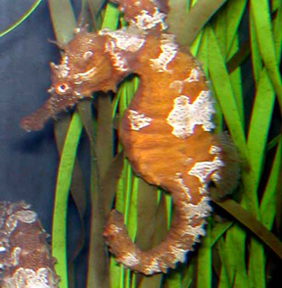
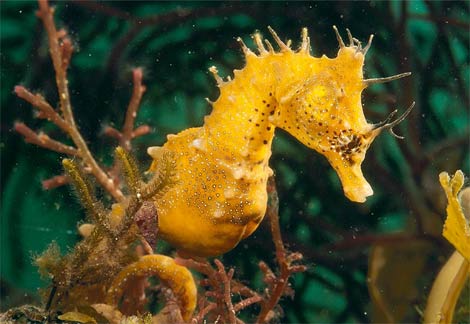
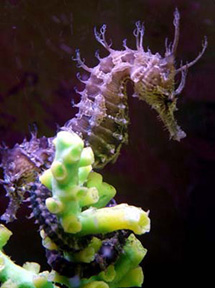
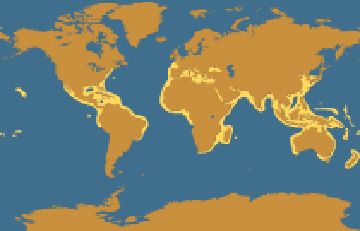 |
Seahorses are found world-wide, usually in shallow tropical and temperate waters throughout the world, from 20 feet to 100 feet. Often hanging on seagrasses or grasping pieces of coral, pier pilings, and sponges, seahorses go unspotted due to their camouflaging abilities. |
|
Seahorses in the Chesapeake Bay are often found hanging on crab pots, an unlikely place and a little hard to camouflage to, but since the decline of the grasses found here, seahorses haven’t had much of a choice. Seahorses live in the most threatened habitats in the world. Seagrass beds, mangroves, coral reefs, and estuaries are among the most productive, diverse, and biologically rich habitats in the world. These same areas are also in danger of disappearing. They face a range of threats including pollution, over fishing, encroaching urban and industrial development, siltation from clear cutting forests, extraction (cutting mangroves or mining limestone), or invasion of non-native species (introduced from ballast waters of ships). Without habitat conservation and better management practices seahorses and their habitats will soon be lost. Courtship When two parties discover a mutual interest at the beginning of breeding season, they court for several days, even while others try to interfere. During this time they have been known to change color, swim side by side holding tails or grip the same strand of sea grass with their tails and wheel around in unison in what is known as their “pre-dawn dance”. They eventually engage in their “true courtship dance” lasting about 8 hours, during which the male pumps water through the egg pouch on his trunk which expands and cleaves open to display an appealing emptiness. When the female’s eggs reach maturity, she and her mate let go of any anchors and snout-to-snout, drift upward out of the seagrass, often spiraling as they rise. The female inserts her ovipositor into the male’s brood pouch, where she deposits her eggs, which the male fertilizes. The fertilized eggs then embed in the pouch wall and become enveloped with tissues. New research indicates the male releases sperm into the surrounding sea water during fertilization, and not directly into the pouch as was previously thought. Most seahorse species' pregnancies lasts approximately two to three weeks. As the female squirts anywhere from dozens to thousands of eggs from a chamber in her trunk into his pouch, her body slims while his swells. Both seahorses then sink back to the bottom and she swims off. Scientists believe the courtship behavior serves to synchronize the movements of the two animals so that the male can receive the eggs when the female is ready to deposit them. The eggs are then fertilized in the father’s pouch which is coursed with Prolactin , the same hormone responsible for milk production in pregnant women. He doesn’t supply milk, but his pouch provides oxygen as well as a controlled environment incubator. The eggs then hatch in the pouch where the salinity of the water is regulated. This prepares the newborns for life in the sea. Throughout the male’s incubation, his mate visits him daily for “morning greetings”. The female seahorse swims over for about 6 minutes of interaction reminiscent of courtship. They change color, wheel around sea grass fronds, and finally promenade, holding each other’s tails. Then, the female swims away until the next morning, and the male goes back to vacuuming up food through his snout. Birth The male seahorse can give birth to as few as 1 and as many as 2,000 "fry" at a time and pregnancies last anywhere from two to four weeks, depending on the species. When the fry are ready to be born, the male undergoes muscular contractions to expel them from his pouch. He typically gives birth at night and is ready for the next batch of eggs by morning when his mate returns. Like almost all other fish species, seahorses do not care for their young once they are born. Infants are susceptible to death from predators or being swept into ocean currents, where they drift away from rich feeding grounds or into temperatures too extreme for their delicate bodies. Fewer than five infants of every 1,000 born survive to adulthood, helping to explain why litters are so large. The survival rates of these infants are actually fairly high compared to fish standards, because they are initially sheltered in their father’s pouch during the earliest stages of development, while the eggs of most other fish are abandoned immediately after fertilization. This makes the process worth the great cost to the father of incubating his offspring. Use in Chinese medicine Seahorse populations are thought to have been endangered species in recent years by overfishing and habitat destruction. The seahorse is used in traditional Chinese herbology, and as many as 20 million seahorses may be caught each year and sold for this purpose. Medicinal seahorses are not readily bred in captivity as they are susceptible to disease and have somewhat different energetics than aquarium seahorses. Import and export of seahorses has been controlled under CITES Convention on the International Trade in Endangered Species of Wild Flora and Fauna since May 15, 2004. However, Indonesia, Japan, Norway, and South Korea have chosen to opt out of the trade rules set by CITES. The problem may be exacerbated by the growth of pills and capsules as the preferred method of ingesting medication as they are cheaper and more available than traditional, individually tailored prescriptions of raw medicinals but the contents are harder to track. Seahorses once had to be of a certain size and quality before they were accepted by traditional Chinese medicine practitioners and consumers. But declining availability of the preferred large, pale and smooth seahorses has been offset by the shift towards prepackaged medicines, which make it possible for TCM merchants to sell previously unused juvenile, spiny and dark-colored animals. Today almost a third of the seahorses sold in China are prepackaged. This adds to the pressure on the species. Pygmy Seahorse These creatures are only about 5-10mm in length, so finding and photographing them is quite difficult and requires specialized video equipment. Pygmy seahorses socialize with one another at certain times of the day and I happened to be there at the right time. I was alone shooting this video but had been to the same site twice earlier that day. Still, it took 25 minutes to find the site and another 20 minutes to find the animals. They are very hard to spot! It's very rare to see them free swimming and quite rare to catch four in the frame at one time. The width of the frame is about 50mm. |
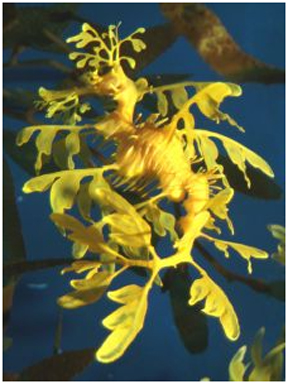
|
Go To Save The Corals |
presented by:
Signature Studios
Mark D. Sabatke
 50 Summit Avenue, Room 409
50 Summit Avenue, Room 409
 Hagerstown,
Maryland 21740
Hagerstown,
Maryland 21740  (301) 733-4363
(301) 733-4363Mark@SignatureStudios.info